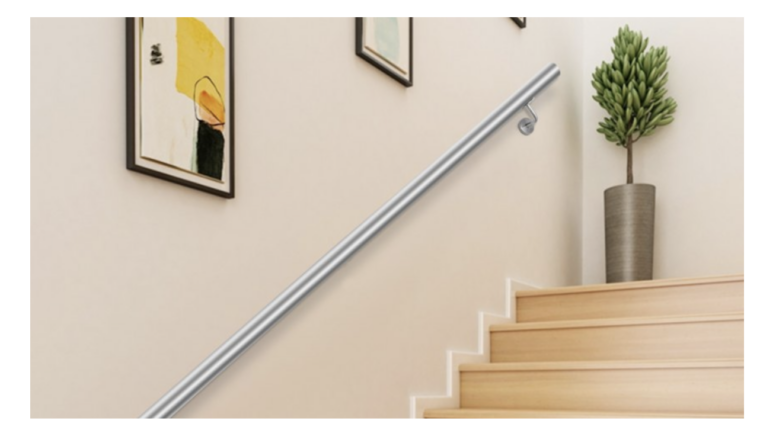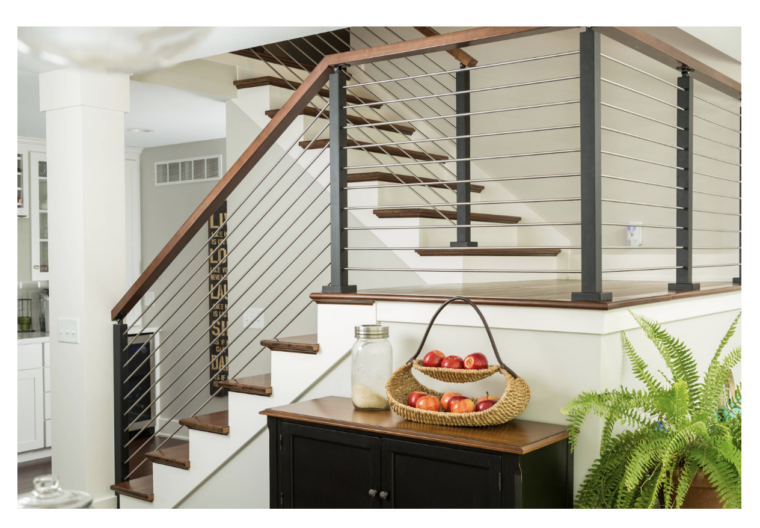5 Handrails Ideas To Enhance The Safety Of Your Stairs
The stair railing, an often overlooked but vital architectural component, plays an important role in both safety and design. Aside from providing support and stability during stair ascent and descent, the handrail plays an important role in establishing the visual and tactile experience of a staircase. It acts as a guide, assuring individual safety while also contributing to the overall aesthetic and character of the place.
The handrail has progressed from a mere requirement to a design statement in architectural design. Stair handrails are available in a wide variety of materials, styles, and layouts, allowing for creative expression and customization. Handrails offer a blend of style and function, whether made of sleek stainless steel for contemporary elegance or warm wooden forms for classic appeal.
Furthermore, the handrail provides a subtle but significant connection between different levels of a structure, encouraging a sense of continuity and connectedness within the architectural context. The stair handrail, as an integral part of the built landscape, reflects the confluence of safety considerations and design innovation, boosting both the functionality and beauty of staircases in both residential and commercial environments.

Common 5 Handrail Ideas for Elevated Staircase Safety
In this comprehensive essay, we will look at typical handrail designs that successfully combine safety and style, ensuring your staircase is a harmonious blend of functionality and beauty.
-
Stainless Steel Handrails
Stainless steel is a classic material recognized for its toughness and slick appearance. Stainless steel handrails not only provide a secure grip but also add a modern and minimalist style to your staircase. The unique design adds architectural appeal while also ensuring safety during ascent and descent.
-
Glass-Panel Handrails
Glass-panel railings are ideal for creating an open and airy ambiance. The crisscross pattern generated in this design, paired with translucent glass panels, creates a stylish and contemporary appeal. This architectural option allows light to flow freely, adding to a brighter and more pleasant staircase environment.
-
Wood And Metal Fusion Handrails
Choose the wooden handrails that combine the warmth of wood and the strength of metal. When paired with wooden components, this form strikes the perfect mix between rustic charm and sophisticated elegance. This perfect combination gives a touch of organic elegance to your staircase while ensuring safety.
-
Curved Handrails
Experiment with curved handrails instead of typical straight lines. This design option gives a sculptural and artistic twist to your staircase. The delicate curves of the excellent design not only add to the pattern’s unique visual appeal but also offer a comfortable and stable grip as you negotiate the steps.
-
Cable Railing Handrails
Cable railing handrails with cable railing systems provide a sleek and modern appearance. The cable-shaped form, along with tensioned cables, creates a minimalist and unobstructed appeal. Cable railing handrails are not only visually stunning but also allow an unbroken view, making them an excellent choice for individuals who appreciate both safety and panoramic beauty.

Features Of Steel Stair Railing
In the worlds of architecture and interior design, steel stair railing serves as both a useful guard and a decorative feature. These railings, known for their strength and adaptability, provide the ideal balance of strength and aesthetic appeal.
-
Durability and Strength
Steel stair railings have unrivalled durability, which is one of their main advantages. Steel is corrosion and wear-resistant, ensuring longevity even in high-traffic locations. Because of its longevity, steel is an excellent choice for both indoor and outdoor stairs, providing a dependable safety feature.
-
Design Flexibility
Steel’s adaptability opens up a world of design options. Steel stair railings can be adapted to fit numerous architectural styles, ranging from sleek, minimalist designs that match modern interiors to elaborate and ornate patterns that offer a sense of elegance to more traditional areas. The versatility of the material allows architects and designers to construct visually attractive railings that improve the overall beauty of a room.
-
Low Maintenance
Steel’s resistance to rust and degradation reduces the need for maintenance. Steel stair railings, unlike some other materials, retain their integrity throughout time, avoiding the need for frequent maintenance and making them a practical and cost-effective solution.
-
Contemporary Elegance
Steel’s clean lines and contemporary look make it a popular option in modern design. Steel stair railings, whether utilised in residential houses, business structures, or public spaces, add a feeling of sophistication and timeless elegance.
Sum Up
Including the hand railings in your staircase design is an excellent approach to improving both safety and style. You may change your staircase into a secure, functional, and visually attractive focal point in your home by investigating these typical handrail options. Steel stair railings are an excellent example of the union of form and function. They not only provide safety and stability but also act as design focal points, increasing the overall visual attractiveness of the places they beautify.
